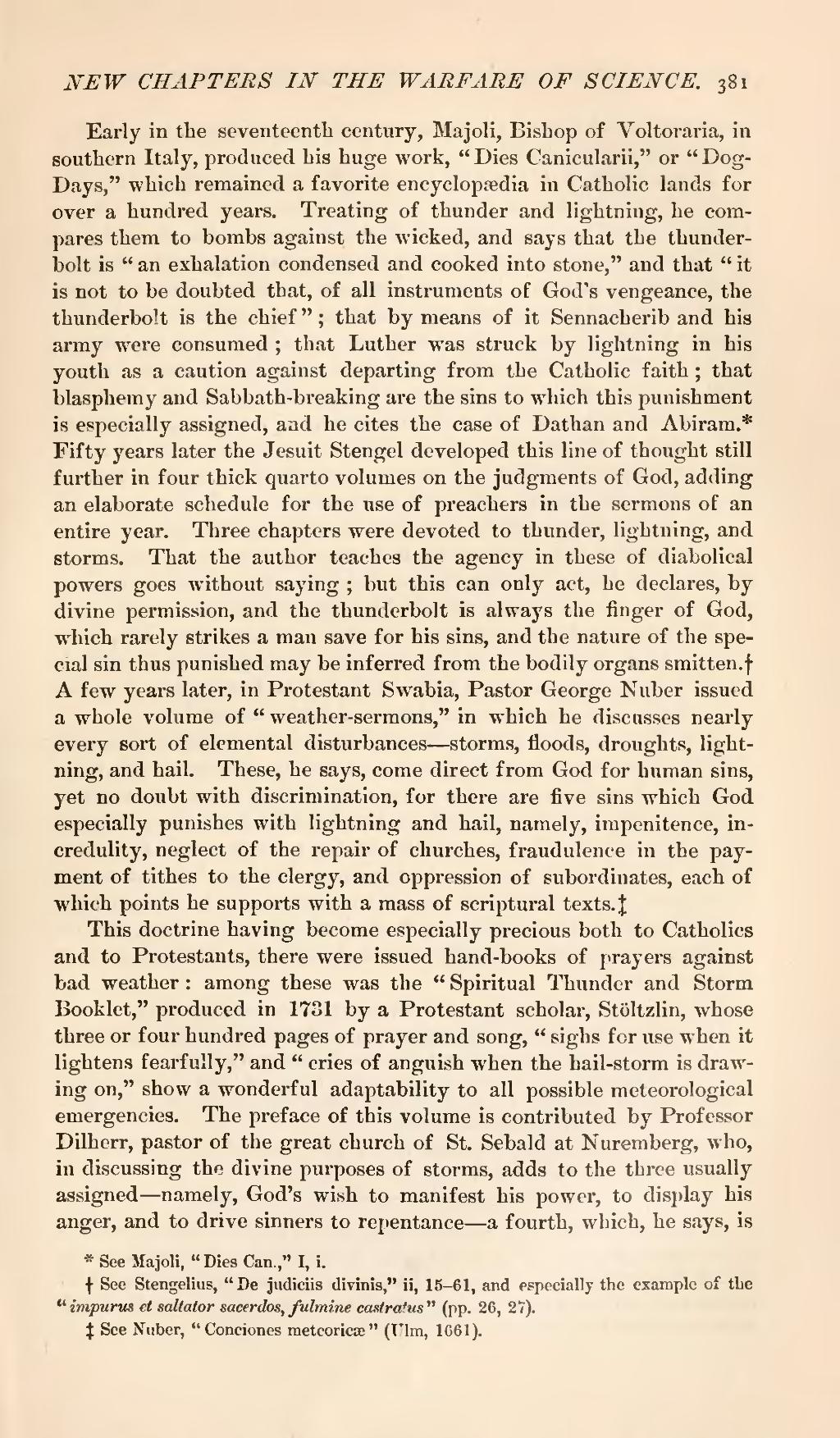Early in the seventeenth century, Majoli, Bishop of Voltoraria, in southern Italy, produced his huge work, "Dies Canicularii," or "Dog-Days," which remained a favorite encyclopædia in Catholic lands for over a hundred years. Treating of thunder and lightning, he compares them to bombs against the wicked, and says that the thunderbolt is "an exhalation condensed and cooked into stone," and that "it is not to be doubted that, of all instruments of God's vengeance, the thunderbolt is the chief"; that by means of it Sennacherib and his army were consumed; that Luther was struck by lightning in his youth as a caution against departing from the Catholic faith; that blasphemy and Sabbath-breaking are the sins to which this punishment is especially assigned, and he cites the case of Dathan and Abiram.[1] Fifty years later the Jesuit Stengel developed this line of thought still further in four thick quarto volumes on the judgments of God, adding an elaborate schedule for the use of preachers in the sermons of an entire year. Three chapters were devoted to thunder, lightning, and storms. That the author teaches the agency in these of diabolical powers goes without saying; but this can only act, he declares, by divine permission, and the thunderbolt is always the finger of God, which rarely strikes a man save for his sins, and the nature of the special sin thus punished may be inferred from the bodily organs smitten.[2] A few years later, in Protestant Swabia, Pastor George Nuber issued a whole volume of "weather-sermons," in which he discusses nearly every sort of elemental disturbances—storms, floods, droughts, lightning, and hail. These, he says, come direct from God for human sins, yet no doubt with discrimination, for there are five sins which God especially punishes with lightning and hail, namely, impenitence, incredulity, neglect of the repair of churches, fraudulence in the payment of tithes to the clergy, and oppression of subordinates, each of which points he supports with a mass of scriptural texts.[3]
This doctrine having become especially precious both to Catholics and to Protestants, there were issued hand-books of prayers against bad weather: among these was the "Spiritual Thunder and Storm Booklet," produced in 1731 by a Protestant scholar, Stöltzlin, whose three or four hundred pages of prayer and song, "sighs for use when it lightens fearfully," and "cries of anguish when the hail-storm is drawing on," show a wonderful adaptability to all possible meteorological emergencies. The preface of this volume is contributed by Professor Dilherr, pastor of the great church of St. Sebald at Nuremberg, who, in discussing the divine purposes of storms, adds to the three usually assigned namely, God's wish to manifest his power, to display his anger, and to drive sinners to repentance—a fourth, which, he says, is

